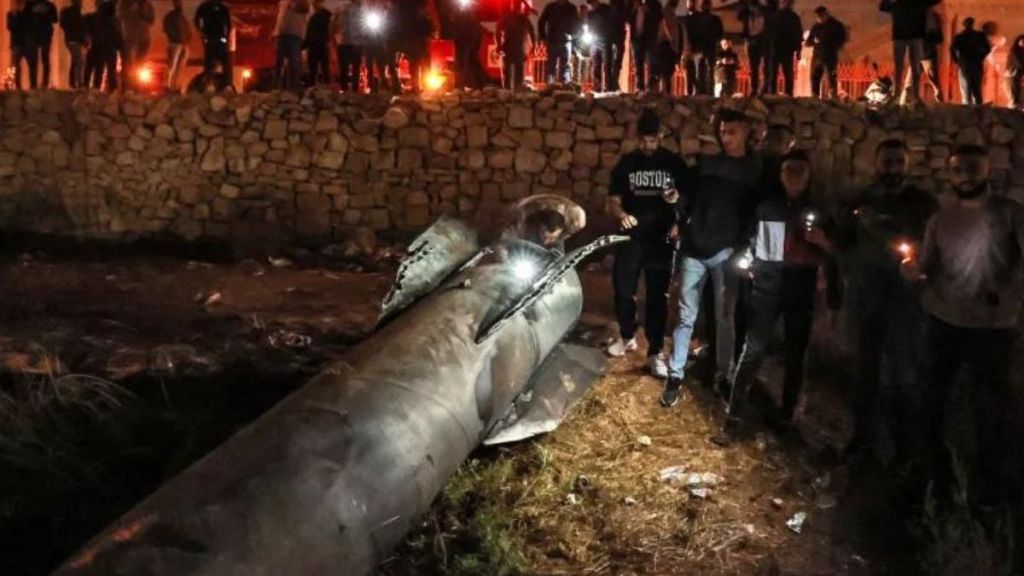
The Islamic Revolutionary Guard Corps (IRGC) of Iran launched another missile strike on Israel on October 1, less than six months after their first missile attack, this time targeting military bases. Named 'Operation True Promise II', this attack was distinct from Iran's previous attack in April, demonstrating a greater level of technological progress and a bold strategic plan.
Iran has now introduced hypersonic missiles for the first time, showing a major advancement from the previous reliance on older drones and ballistic missiles during April's Operation True Promise. The IRGC stated that despite Israel's advanced defence systems, 90% of the missiles hit their targets successfully.
World War 3 (WWIII)
— Sumit (@SumitHansd) October 2, 2024
Iran's missile attack on Israel
Iran Confirms Firing 200 Missiles
India Stands With Israel
As a Indian, I STAND with Iran pic.twitter.com/e4aBkHODNM
Unlike the attack in April that primarily concentrated on isolated military locations, this strike appeared to aim for more crowded urban areas close to Tel Aviv. Masoud Pezeshkian, the President of Iran, labelled the missile attacks as a calculated reaction to Israeli "aggression," cautioning Israel to avoid inciting more aggression.
How Did Iran's Strategy Change?
Iran used hypersonic missiles for the first time in Operation True Promise II, indicating a move away from the older drone and ballistic missile technology utilised in the April assault. The most recent assault showcased a broader assortment of sophisticated weapons.
During April, Iran targeted military bases in isolated locations, whereas now the main focus is on urban centres close to Tel Aviv. Iran stated that it successfully hit its targets 90% of the time in the most recent attack, even with Israel's advanced defence systems, which is a contrast to the high rate of missile interception observed in April.
Debris from an Iranian missile caused the death of a Palestinian man in the West Bank. While there were no injuries on the Israeli side, the attack's nearness to populated areas implies that Israel's potential retaliation may be broader and harsher, as per NDTV.
Due to the direct threat to Israeli citizens, Prime Minister Benjamin Netanyahu is likely to take a more aggressive approach than he did after the April attack, possibly leading to an increase in the conflict with Iran. Resistance groups throughout the Middle East lauded Iran's operation, which may lead to increased participation from Hezbollah, Hamas, and other allied groups in the region.
Which Missiles Did Iran Use?
The Fattah-1 hypersonic missile, unveiled last June, is a precision-guided rocket named "the opener" by Ayatollah Khamenei. It has a range of 1,400 km and a terminal speed of Mach 13 to 15, three times faster than hypersonic speed. The Ghadr missile family, improved variants of the Shahab-3, includes the Ghadr-S, Ghadr-H, and Ghadr-F types with ranges of 1,350 to 1,950 km. Featuring a reshaped warhead design and advanced guidance system, the Ghadr missile has improved accuracy. The Emad ballistic missile, a successor to the Ghadr, has upgraded guidance and a manoeuvrable warhead for precise targeting up to 1,700 km with a CEP of 50 metres.
A Jordanian photographer who was photographing the sky by chance captured such a work of art from Iran's missile attack on the Israel, which also depicts the failure of the Israeli army's defense systems. pic.twitter.com/NhuDDFw3kk
— S p r i n t e r (@SprinterFamily) October 2, 2024
Iran launched its largest missile attack on Israel, utilising hypersonic Fattah missiles with 90% accuracy. Iran said on Wednesday its missile attack on Israel on the Jewish state was over barring further provocation, while Israel and the United States promised to retaliate against Tehran as fears of a wider war intensified.
Among the ballistic missiles that were used in the operation were Ghadr and Emad, as well as the latest Fattah hypersonic missiles, with Tehran claiming that 90 percent of the missiles hit their intended targets.